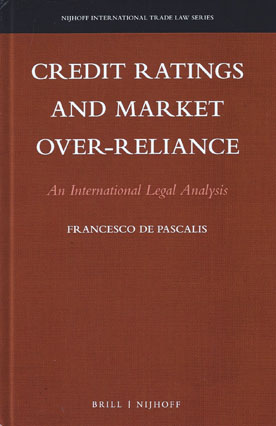
Taking position from the recent 2007-2009 financial crisis, Credit Ratings and Market Over-reliance: An International Legal Analysis by Francesco De Pascalis provides an in depth legal and regulatory analysis of the concept of over-reliance in the use of ratings and how regulation facilitates over-reliance is different from mere reliance on credit ratings.
Not only does the book provide an incisive doctrinal analysis of the concept of over-reliance, it also considers over-reliance from a comparative and international perspective by reviewing legal and regulatory developments under European Union and US law and how over-reliance has been addressed in international financial regulation.